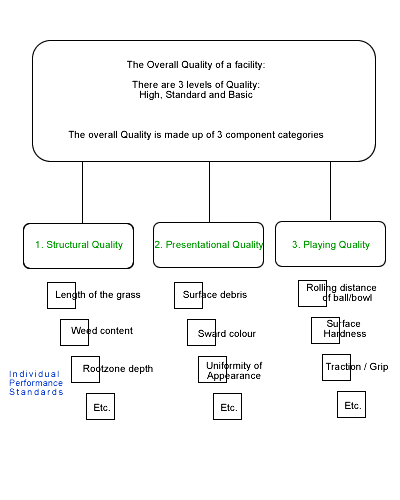Cricket is typically played on a grass square (often a rectangular shape) and will have a various number of pitch positions. The length of an adult pitch is 20.12m (22 yards), whilst a 'typical' square might be 24m (length) x 30m (width).
The playing season can generally be from the middle of April to September, depending upon which league it is.
Quality
A cricket pitch should ideally be
- even throughout, with no undulations or depressions;
- well consolidated, giving good and appropriate ball bounce;
- covered with a dense sward of desirable grasses that have good root density and depth;
In addition, a well prepared pitch should ideally be able to withstand the equivalent of three, five-hour games.
To ensure that a cricket pitch is maintained correctly, not only during the playing season but throughout the whole of the year, a number of individual performance standards are likely to be set. The combination of these standards determines the overall quality of the cricket pitch.
Diagram to Illustrate Quality and Individual Standards

The setting of these performance standards provides a means of objectively assessing the quality of the cricket pitch.
Most users wish to have a first class cricket pitch, however, the true cost in materials, machinery and especially the skills of a qualified and experienced groundsman do not come cheap. Realistically the aim is for a cricket pitch which plays well, is safe and is managed in a cost-effective manner.
The actual maintenance cost for a cricket square will depend on a number of variables, in particular what is actually included within the so called true cost as some costs are hidden within other charges, especially when comparing local authority costs. A like for like comparison can be notoriously difficult to achieve.
